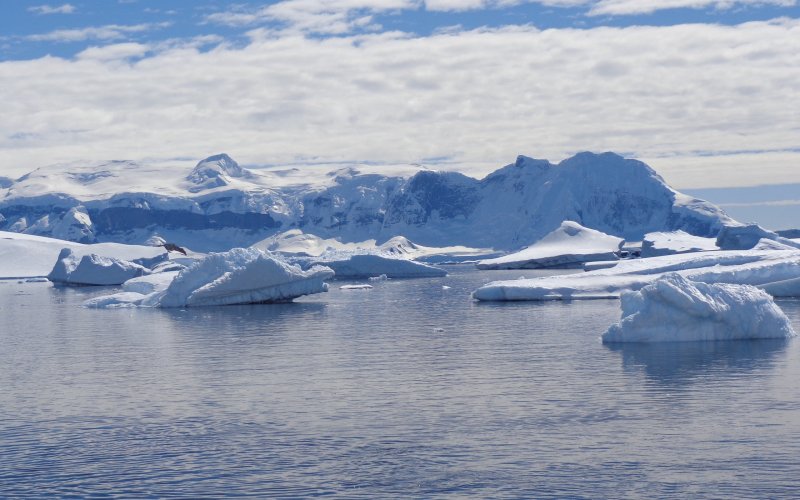Study: Diminishing Arctic Sea Ice Has Lasting Impacts on Global Climate

ALBANY, N.Y. (April 28, 2022) – As the impacts of climate change are felt around the world, no area is experiencing more drastic changes than the northern polar region. Studies have shown the Arctic is warming at two to three times as fast as the rest of the planet, resulting in a rapid loss of its sea ice volume.
That sea ice loss, declining at an average rate of about 13 percent per decade, is having a long-lasting climatic impact in the Arctic and beyond, according to a new study published this month in Nature Communications.
The research team, led by University at Albany atmospheric scientist Aiguo Dai, analyzed observational data and climate model simulations to show how fluctuations in Arctic sea ice cover are able to amplify multi-decadal variations in surface temperatures not only in the Arctic but also in the North Atlantic Ocean.
Their results indicate that recent – and future – decreases in sea ice cover have a significant influence on global climate.
“Through our study, we demonstrated for the first time that fluctuations in sea ice-air interactions can greatly enlarge or amplify multi-decadal climate variations not only in the Arctic, but also the North Atlantic,” said Dai, a distinguished professor in the Department of Atmospheric and Environmental Sciences.
“As the melting of Arctic sea ice continues, its impacts are likely to be felt even more in coming decades, not only in the Arctic but over the North Atlantic and other regions across the globe,” said Dai. “This is because sea surface temperature anomalies in the North Atlantic can affect atmospheric circulation patterns over Europe, North America, West Africa and South America, leading to temperature and precipitation changes in these regions.”
Sea Ice-Air Interactions

The researchers used publicly available observational data, coupled with two novel climate model simulations carried out through a computer hosted at the UAlbany Data Center. In one simulation, Arctic sea ice cover was allowed to fluctuate freely based on changing climatic conditions, while the other parallel simulation was run without year-to-year sea-ice fluctuations.
When sea ice cover was fixed, multidecadal climate variations were reduced, both in the Arctic and North Atlantic, by 20 to 50 percent. This suggests that sea ice-air interactions play a crucial role in regulating climate variations.
The researchers ran additional simulations using rising carbon dioxide levels by 1 percent per year to further confirm their results. They are currently examining other possible influences of Arctic sea ice, such as on El Nino-Southern Oscillation in the tropical Pacific.
Jiechun Deng, an atmospheric scientist at Nanjing University of Information Science and Technology, worked as a research fellow with Dai at UAlbany from 2018 to 2020. He is the lead author of the study.
"Working with Prof. Dai at UAlbany was a truly inspiring experience,” Deng said. “Our research highlights the crucial role of sea ice-air coupling in amplifying multidecadal variability. In doing so, it contributes to the ongoing debate on the role of sea ice in the recent decadal temperature trend in both Arctic and midlatitudes."
Arctic Amplification
This study is the latest in a series of Nature Communications articles published by Dai and his team over the last several years that focus on changes in the Arctic climate.
In 2019, Dai led a study examining the causes of Arctic Amplification (AA), the term used to describe the Arctic’s warming rates at two to three times the rest of the planet. The climate simulations used for that study showed that additional AA will not diminish until nearly all the Arctic’s sea ice has melted away in the 23rd century.
Further, that study concluded that AA would not exist if surface fluxes were calculated with a fixed sea ice cover, again suggesting that Arctic sea ice loss has profound climatic impacts.
“The take-home message here is that the Arctic region is very important for Earth’s climate and the rapid melting of its sea ice has, and will continue to have, significant climatic impacts worldwide,” Dai said.




